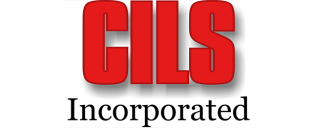By AISHA AZHAR
COLLEGE PARK, Md.—As the number of speed cameras and red light cameras on Maryland roads grows, frustrated drivers can turn to any number of technologies to avoid automated tickets.
Drivers have used sprays, reflective license plate covers and even car waxes to circumvent traffic cameras, even though authorities in Maryland and other states have banned them.
But the latest technology is noPhoto—a license plate cover that uses the same mechanics built into traffic cameras to fool them, and, unlike older products, could be more difficult for the authorities to detect.
In Maryland, red light cameras were introduced in 1997 and speed cameras in 2007. Both have been unpopular with drivers, often criticized as revenue generators for cities that do little to deter accidents.
“People are looking at such creative ways to fight these cameras because they’re not happy,” said John Bowman, a spokesperson for the National Motorists Association. The NMA strongly opposes the use of traffic cameras.
The noPhoto device looks like a regular license plate frame, but it features two tiny flashes on each side. When it detects a camera flash, it creates enough light around the plate to distort the picture taken by the camera.
“The concept itself...is nothing revolutionary,” said Jonathan Dandrow, the Ohio-based inventor of noPhoto. The optical slave trigger, which powers noPhoto, is commonly used by photographers for indoor photography. Dandrow said he tweaked it so that it could be used outdoors and from a distance of up to 100 feet.
Before he begins to sell his product, Dandrow plans to get a safety certification, which he estimates will cost up to $80,000. If Dandrow is able to raise the money from his fundraising campaign on Indiegogo, a crowdfunding website, he will start distribution by early spring. Each unit costs nearly $350 and will be available for purchase on their website.
NoPhoto’s price is steep compared to the existing products on the market, which range between $20 to $40. However, Dandrow said his tech is a good investment because the sprays and shields are either banned in most states or aren’t effective.
Most shields are too bulky and can be easily detected, he said. Aerosol sprays, which are more popular, are hard to detect but don’t always work. This is because license plates now use a combination of matte and glossy surfaces to optimize their visibility.
“When these sprays first came out...they did work. But not anymore, because the way license plates are manufactured even out their effect, ” Dandrow said.
Like many other states with traffic cameras, Maryland banned the sale and use of anti-camera technology. The ban took effect in 2001.
“Our law prohibits the use of any registration plate covers, and this includes any device that attempts to distort the recorded image of a vehicle’s registration plate,” said Sgt. Mark Black, a spokesperson for the Maryland State Police.
By adding the ‘recorded image’ clause, Maryland has an iron-clad law that leaves little wiggle room for motorists using anti-traffic-camera products. Other states are not as specific, which means drivers there could legally use noPhoto. But in Maryland, it’s most likely illegal.
“The language in most vehicular codes says that we can’t obscure the readability of the license plates. So our product is okay (in many states) because the human eye can see it, just the camera can’t,” Dandrow said.
Black said that motorists who use sprays and illegal covers aren’t hard to identify. Often, the glare created by these products is clearly visible to anyone who isn’t standing directly behind the vehicle.
But noPhoto is designed to minimize the viewing angle, so that the flash can only be detected by an elevated traffic camera. Dandrow also said that the flash is too fast for the human eye to process, making it much harder for the police to detect drivers using the technology and fine them.
Most camera manufacturers are equipped to deal with brightened photos: the images are simply reversed—or converted to a negative—to decipher the characters on the registration plate. Dandrow said that while that may hold true for shields and sprays, the noPhoto is impervious to reversed images.
“If the light is bright enough, like that produced by noPhoto, no amount of Photoshopping can get you the characters on the plate,” he said. “Maybe, one or two, but that’s not enough to convict you.”
However, all these products are useless against cameras that don’t use a flash, such as the ones in Howard County, according to county officials.
Flashless cameras don’t encounter the glare—or the flash of the noPhoto—that obscure registration plates, allowing them to take clear photos. The same principle applies to toll booth cameras.
If caught with a registration plate cover that obscures the license plate, drivers in Maryland can be fined up to $70. A ticket for running a red light, meanwhile, is $75.
“The fact that people are willing to go to such lengths to protect themselves from what we look at as abusive practices and predatory law enforcement tells us that the system is flawed,” Bowman said.


